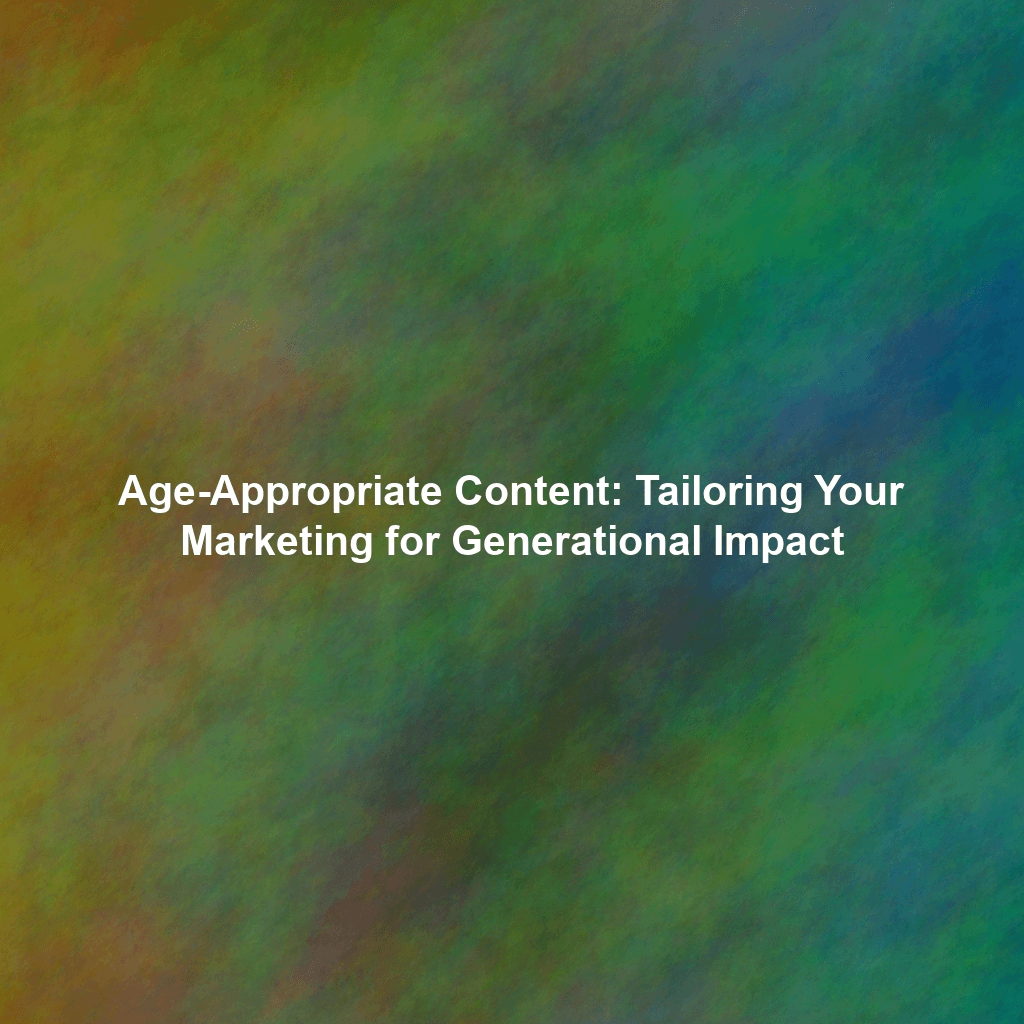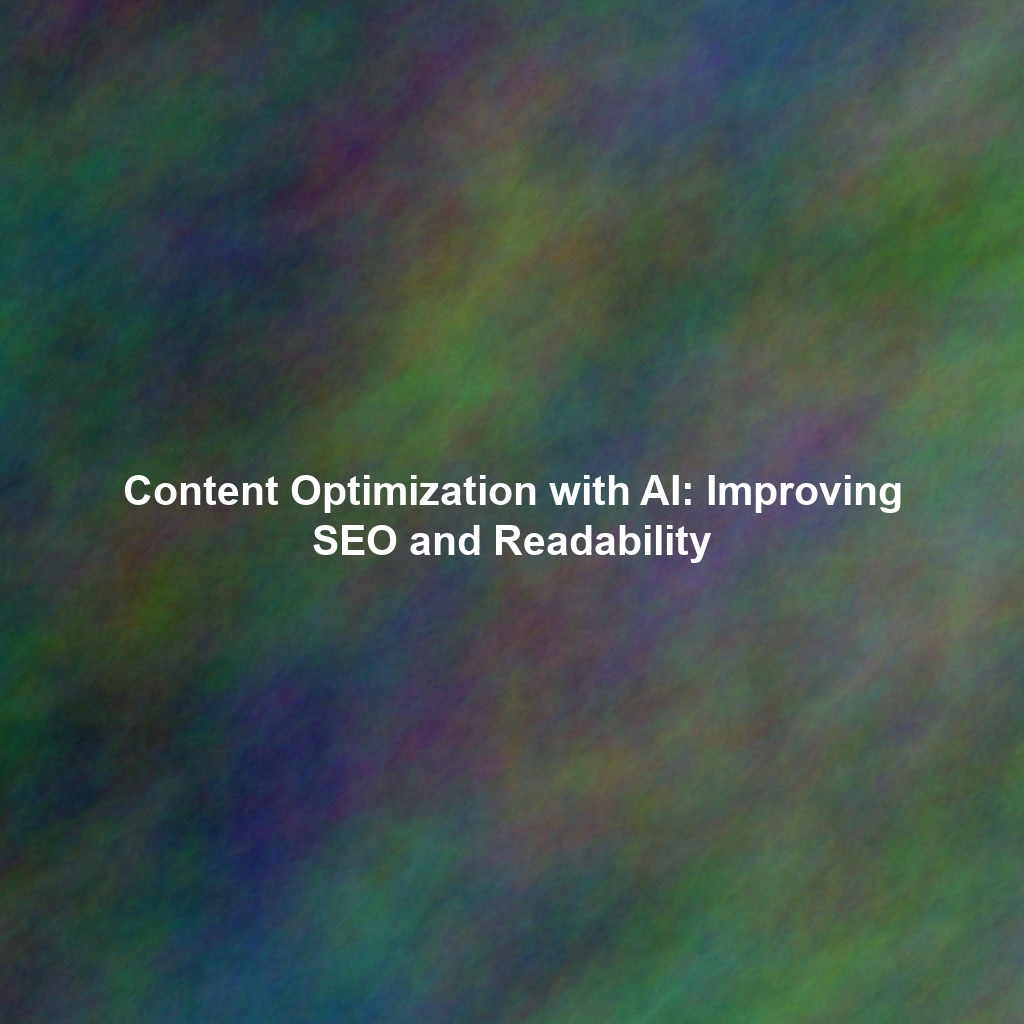Understanding the Importance of Age-Appropriate Content in Content Marketing
In the ever-evolving landscape of content marketing, one size rarely fits all. While crafting compelling narratives and visually appealing assets is crucial, understanding your audience is paramount. Ignoring the diverse needs and preferences of different age groups can render your marketing efforts ineffective, resulting in low engagement, missed opportunities, and ultimately, a diluted brand message. This article delves into the critical aspects of creating content tailored for various age demographics, equipping you with the knowledge and strategies to connect with your audience on a deeper, more meaningful level.
Why Generational Segmentation Matters
Each generation has been shaped by unique historical events, technological advancements, and cultural shifts. These factors profoundly influence their values, communication styles, media consumption habits, and online behavior. For example, Baby Boomers, who grew up in a pre-digital era, may prefer traditional forms of content like newsletters and print materials, while Gen Z, digital natives, are more likely to engage with short-form video content on platforms like TikTok and Instagram. By acknowledging these differences, you can tailor your content to resonate with specific age groups, increasing its relevance, appeal, and overall impact.
Defining the Generational Landscape: A Quick Overview
Before diving into specific content strategies, let’s briefly define the major generational cohorts you’ll likely encounter in your target audience:
- Baby Boomers (Born 1946-1964): Often characterized by their strong work ethic, loyalty, and respect for authority. They value reliability and trustworthiness.
- Generation X (Born 1965-1980): Known for their independence, resourcefulness, and adaptability. They appreciate authenticity and a no-nonsense approach.
- Millennials (Born 1981-1996): Tech-savvy, socially conscious, and value experiences over material possessions. They seek purpose and connection.
- Generation Z (Born 1997-2012): Digital natives who have grown up with the internet and social media. They are highly visual, entrepreneurial, and value inclusivity.
- Generation Alpha (Born 2013-2025): The youngest generation, still shaping their identity. They are heavily influenced by technology and are expected to be even more digitally fluent than Gen Z.
It’s important to note that these are broad generalizations, and individual preferences within each generation can vary significantly. However, understanding these overarching trends provides a valuable foundation for your content strategy.
Crafting Content Strategies for Each Generation
Now, let’s explore specific content strategies tailored for each age group:
Content Marketing to Baby Boomers
Baby Boomers value information that is reliable, trustworthy, and easy to understand. They appreciate content that provides practical advice, answers their questions, and addresses their concerns. When crafting content for this generation, consider the following:
- Preferred Channels: Email newsletters, websites, print materials, and television advertising.
- Content Formats: Articles, blog posts, case studies, and testimonials that showcase the value and reliability of your products or services.
- Messaging: Focus on the benefits of your offerings, highlighting how they can improve their lives and address their specific needs. Use clear, concise language and avoid jargon.
- Tone: Maintain a respectful, professional, and informative tone. Emphasize trust and credibility.
- Considerations: Ensure your website and content are accessible and easy to navigate. Pay attention to font size and readability.
Content Marketing to Generation X
Generation X appreciates authenticity, directness, and a no-nonsense approach. They value information that is relevant, concise, and trustworthy. When creating content for this generation, keep these points in mind:
- Preferred Channels: Email, websites, social media (particularly Facebook), and online forums.
- Content Formats: Blog posts, articles, videos, and podcasts that provide valuable insights and practical solutions to their problems.
- Messaging: Focus on the value proposition of your products or services, highlighting how they can save them time, money, or effort. Be transparent and honest in your communication.
- Tone: Maintain a straightforward, authentic, and informative tone. Avoid hype and exaggeration.
- Considerations: Respect their time by providing concise and to-the-point content. Offer a variety of formats to cater to their diverse preferences.
Content Marketing to Millennials
Millennials are tech-savvy, socially conscious, and value experiences over material possessions. They seek purpose and connection in their interactions with brands. When marketing to millennials, consider the following:
- Preferred Channels: Social media (Instagram, YouTube, Facebook), blogs, podcasts, and email.
- Content Formats: Videos, blog posts, user-generated content, interactive experiences, and social media stories that are engaging, informative, and visually appealing.
- Messaging: Emphasize the social impact of your brand and products or services. Highlight how you are making a difference in the world. Focus on building relationships and fostering a sense of community.
- Tone: Maintain an authentic, relatable, and conversational tone. Be transparent and open in your communication.
- Considerations: Leverage user-generated content and social media influencers to build trust and credibility. Provide opportunities for engagement and interaction. Be mindful of your brand’s social responsibility.
Content Marketing to Generation Z
Generation Z are digital natives who have grown up with the internet and social media. They are highly visual, entrepreneurial, and value inclusivity. When creating content for Gen Z, keep these points in mind:
- Preferred Channels: TikTok, Instagram, YouTube, Snapchat, and Twitch.
- Content Formats: Short-form videos, memes, live streams, user-generated content, and interactive experiences that are engaging, authentic, and visually stimulating.
- Messaging: Be authentic, relatable, and humorous. Embrace user-generated content and create opportunities for interaction. Focus on building community and fostering a sense of belonging.
- Tone: Maintain a casual, conversational, and inclusive tone. Be mindful of your brand’s social and environmental impact.
- Considerations: Keep your content short, sweet, and visually appealing. Leverage trending topics and memes to capture their attention. Embrace user-generated content and social media challenges. Partner with influencers who resonate with their values.
Content Marketing to Generation Alpha
Marketing to Generation Alpha, the youngest demographic, requires a slightly different approach. While their purchasing power is largely influenced by their parents, understanding their preferences is crucial for long-term brand building. Keep in mind:
- Preferred Channels: YouTube Kids, educational apps, gaming platforms (Roblox, Minecraft), and parent-approved social media (supervised accounts).
- Content Formats: Animated videos, interactive games, educational content disguised as entertainment (“edutainment”), and content featuring relatable children and families.
- Messaging: Focus on fun, creativity, exploration, and learning. Ensure content is age-appropriate, safe, and promotes positive values.
- Tone: Maintain an upbeat, playful, and engaging tone. Avoid complex language and focus on visual storytelling.
- Considerations: Prioritize child safety and privacy. Partner with parents and educators to create content that is both entertaining and educational. Obtain parental consent before collecting any personal information.
Key Considerations for All Age Groups
While tailoring your content to specific age groups is essential, some overarching principles apply to all demographics:
- Value Proposition: Clearly communicate the benefits of your products or services and how they can solve your audience’s problems.
- High-Quality Content: Create content that is well-written, informative, and engaging. Avoid grammatical errors and typos.
- Visual Appeal: Use high-quality images and videos to capture your audience’s attention. Ensure your content is visually appealing and easy to read.
- Mobile Optimization: Ensure your content is optimized for mobile devices. Many people access the internet through their smartphones and tablets.
- Accessibility: Make your content accessible to everyone, including people with disabilities. Use alt text for images and provide captions for videos.
- Call to Action: Include a clear call to action in your content, telling your audience what you want them to do next.
Measuring the Success of Your Age-Targeted Content
Measuring the effectiveness of your content strategy is crucial for optimizing your efforts and ensuring a strong ROI. Beyond basic metrics like page views and social shares, consider these age-specific indicators:
- Website Analytics: Use tools like Google Analytics to track the age demographics of your website visitors and their engagement with different types of content.
- Social Media Analytics: Analyze the age demographics of your social media followers and track their engagement with your posts.
- Email Marketing Analytics: Segment your email list by age and track open rates, click-through rates, and conversion rates for each segment.
- Surveys and Feedback: Conduct surveys and gather feedback from your audience to understand their preferences and identify areas for improvement.
By tracking these metrics, you can gain valuable insights into which content strategies are most effective for each age group and make data-driven decisions to optimize your content marketing efforts.
Conclusion: A Targeted Approach to Content Marketing
Creating content for different age groups is not just about ticking a box; it’s about building meaningful connections with your audience. By understanding the unique characteristics, preferences, and online behaviors of each generation, you can tailor your content strategy to resonate with them on a deeper level. This targeted approach will lead to increased engagement, improved brand loyalty, and ultimately, greater success for your content marketing efforts. Remember to continuously analyze your results and adapt your strategies to stay ahead of the curve and connect with your audience in a way that is both relevant and impactful. It’s an ongoing process of learning, adapting, and refining your approach to truly connect with your target audience, no matter their age.
“`
 Skip to content
Skip to content

